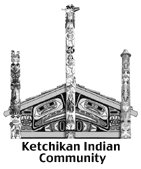 By LEE BOWMAN September 18, 2006
Based on other artifacts found with the inscribed block, Mexican and American archaeologists date it to around 900 B.C., about 400 years earlier than any example of writing from the Olmec culture seen before. The Olmec civilization, which flourished along the Gulf of Mexico coast northwest of the Yucatan Peninsula from about 1200 B.C. until 400 B.C., is considered by many scholars to have been the first great culture of Central America. But others consider it to be just one of several advanced societies in the region around the same time. Olmecs, in addition to creating a sophisticated digital calendar, elaborate artwork that includes massive carved heads and cities built around ceremonial pyramids, established themes in religion and ritual that endured until the Spanish toppled the descendant Aztec empire 2,000 years later. "This block shows a whole new dimension to the society. It's a jaw-dropping find," said Stephen Houston, an anthropologist at Brown University in Providence, R.I., whose specialty is ancient writing systems. He is a co-author of a report on the discovery published Friday in the journal Science. "This takes this civilization to a different level, and opens up the possibility that they used accounting and recordkeeping." The block, about as long and wide as a modern legal pad and as thick as a major metropolitan city phone book, is made of the mineral serpentine. Workers in the state of Veracruz found the stone in a gravel quarry along with pottery shards and figurines that allowed Mexican archaeologists led by Carmen Rodriguez and Ponciano Ortiz to set an older date for the writing. Previous examples of Olmec symbols had been dated only to a phase of the civilization that thrived about 400 years later. Although the dating of the artifact from companion material that had also been moved around is controversial, even skeptics of its age agree that the stone represents a dramatic new example of Olmec writing. The carved text consists of 62 glyphs, or signs, some of which are repeated up to four times. Because of the distinct elements, patterns of sequencing and consistent reading order, the researchers write that the text "conforms to all expectations of writing." Five sides on the block are rounded outward, while the surface with the text curves inward. The researchers believe that indicates the block had been carved repeatedly and erased - a discovery Houston said is "unprecedented." Several pairs of sequences of signs also led the scientists to conclude that the text has poetic couplets, which would be the earliest example of this type of expression found in the region known as Mesoamerica. Of course, no one knows just what the symbols mean yet. They don't match any writing from later Olmec times. But Houston and his colleagues are convinced that more examples can be found and eventually translated. "This stone is telling us that these records probably exist and that many remain to be found. If we can decode their content, these earliest voices of Mesoamerican civilization will speak to us today," Houston said.
On the Net:
Distributed to subscribers for publication by Scripps Howard News Service, http://www.shns.com Publish A Letter on SitNews Read Letters/Opinions
|
||


